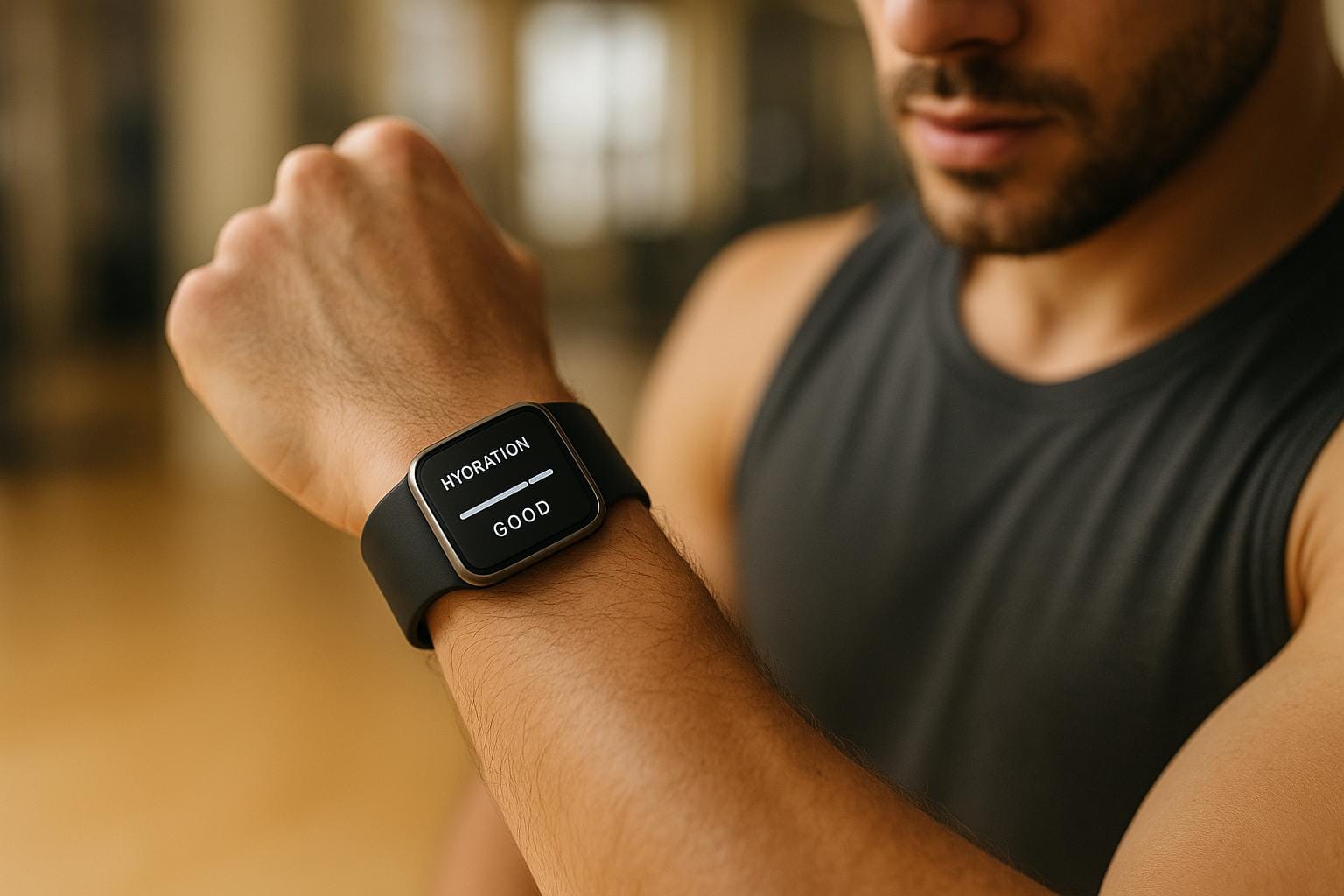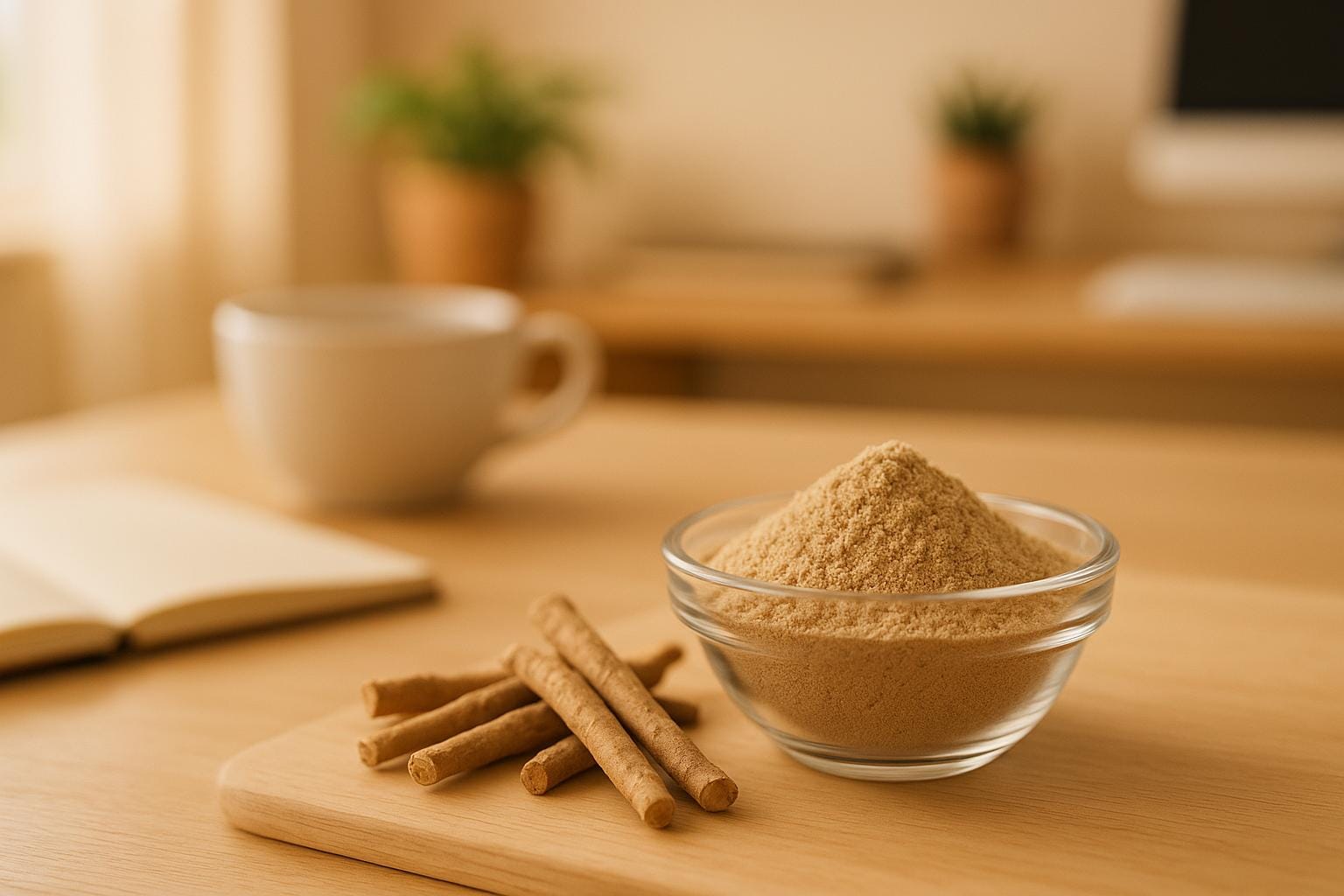Want faster recovery after workouts? Here are five methods backed by science to help you feel better, reduce soreness, and improve performance:
- Eat Right Post-Workout: Have 20–25g of protein within an hour and pair it with carbs to repair muscles and replenish energy.
- Sleep Well: Aim for 7–9 hours of sleep to support muscle repair and reduce inflammation.
- Stay Hydrated: Drink water before, during, and after exercise. Replace lost fluids to keep your body functioning properly.
- Try Active Recovery: Light activities like walking or yoga improve blood flow and reduce soreness.
- Use Mindfulness Techniques: Breathing exercises and meditation lower stress and speed up recovery.
These tips help your body recover and prepare for your next workout. Keep reading for detailed steps and practical advice.
The Science of Recovery for Workouts A Comprehensive Guide
Post-Workout Nutrition Basics
Getting the right nutrients after exercise helps your body recover faster.
Protein Timing and Amount
Your body is primed for protein synthesis right after a workout. Aim for 20–25 grams of fast-digesting protein, like whey isolate, within an hour to aid muscle repair.
Combining Protein and Carbohydrates
Replenish glycogen by eating carbohydrates within four hours after exercising. A quick option? Blend a 20–25 gram protein shake with some fruit for a protein-and-carb combo.
Up next, see how quality sleep can take your recovery to the next level.
Sleep and Recovery
After addressing your post-workout nutrition, focus on enhancing your recovery with quality sleep.
How Sleep Affects Muscle Recovery
Sleep plays a key role in repairing muscles and restoring energy. During non-REM sleep - which makes up about 80% of your sleep cycle - your body releases human growth hormone and increases protein synthesis by up to 30% compared to when you're awake.
Here’s what happens during sleep:
- Hormones that aid in tissue repair are produced
- Muscle tissue is rebuilt
- Liver and muscle glycogen stores are replenished
- Inflammation is reduced
- The brain clears metabolic waste
Tips for Better Sleep
Stick to a Schedule Aim for 7–9 hours of consistent sleep each night. Plan high-intensity workouts on days when you can get sufficient sleep, and save lighter sessions for evenings when rest might be disrupted.
Optimize Your Sleep Environment
- Keep your bedroom dark, quiet, and cool
- Use blackout curtains or an eye mask
- Consider white noise machines or earplugs
- Invest in a comfortable mattress and pillows
Create a Relaxing Evening Routine
- Stop consuming caffeine at least six hours before bedtime
- Turn off screens 30 minutes before going to bed
- Unwind with activities like reading, gentle stretching, or meditation
- Sip on a caffeine-free herbal tea if it helps you relax
Time Your Workouts Wisely Avoid intense exercise within four hours of bedtime.
This article is for informational purposes only and is not a substitute for professional medical advice. Consult a healthcare provider before starting any new fitness or wellness routine.
Next, learn how smart hydration can support your recovery.
Smart Hydration Strategies
Hydration plays a key role in recovery by helping deliver nutrients and remove waste from the body.
Why Water Matters
Even a small loss of body water - just 1% - can reduce strength, power, and endurance. Drinking enough water helps your muscles get the nutrients they need and keeps your body functioning efficiently.
Daily Water Goals
According to the U.S. National Academies, men should aim for 15.5 cups (3.7 L) of water daily, while women need about 11.5 cups (2.7 L).
Hydration Schedule
- 2 hours before activity: Drink 17 oz (500 mL) of water.
- During activity: Sip 7–10 oz (200–300 mL) every 10–20 minutes. For heavy sweating, include 40–100 mmol/L of sodium.
- After activity: Replace fluids by drinking 16–24 oz (475–710 mL) for every pound lost. Aim for pale, clear urine as a hydration indicator.
Easy Ways to Stay Hydrated
- Use a reusable water bottle to monitor your water intake.
- Set phone reminders to drink water throughout the day.
- Make it a habit to drink water with every meal.
This information is for educational purposes only.
Light Exercise for Recovery
Active recovery, which involves gentle movement after a workout, helps improve blood flow, flush out lactic acid, and support muscle repair.
How Light Movement Helps
Gentle exercise increases circulation in tired muscles, helping to reduce soreness and clear out waste products like lactic acid. According to the American Council on Exercise, athletes who stayed active at about 50% of their maximum effort during intervals recovered more efficiently than those who completely rested. When paired with good nutrition and adequate sleep, these activities can enhance overall recovery.
Simple Light Exercises to Try
Here are a few low-intensity options to incorporate into your routine:
- Walking: Take a 10-minute stroll at an easy pace after workouts or on rest days.
- Cycling or Swimming: Engage in low-resistance pedaling or gentle swimming strokes to cool down and ease inflammation.
- Yoga: Practice slow, gentle flows to maintain flexibility and aid muscle recovery.
A 2010 study showed that a recovery swim after interval training improved next-day performance, suggesting it helps reduce inflammation.
Next, learn how mindful breathing and meditation can enhance both mental and physical recovery.
This article is for informational purposes only and is not intended as medical advice. Always consult a healthcare professional before beginning any new fitness or wellness routine.
Mental Recovery Methods
Enhance your recovery process with simple mental techniques. Just like eating well, staying hydrated, and getting enough sleep, these practices can help your body heal faster.
Mind-Body Connection
Practices like meditation and controlled breathing engage the parasympathetic nervous system, also known as the "rest-and-digest" mode. This helps lower blood pressure, slow down your heart rate, and reduce muscle tension - key factors in recovery and repair. For example, doing 30 minutes of alternate-nostril breathing daily over 12 weeks has been shown to improve heart rate, blood pressure, and stress levels.
Quick 5-Minute Recovery Techniques
Here are two effective, science-supported exercises you can try after a workout:
- Box Breathing: Inhale for 4 counts, hold your breath for 4 counts, exhale for 4 counts, and hold again for 4 counts. Repeat this cycle for 3–5 minutes.
- Meditation: Sit quietly for 5–10 minutes. Focus on slow, steady breathing. If you notice tension or your mind wandering, gently bring your attention back to your breath.
Experiment with these methods and compare them alongside other recovery strategies to find what works best for you.
Recovery Methods Compared
Let's break down the short-term effectiveness of different recovery strategies.
Research by Martínez-Gómez et al. shows that total rest, low-intensity exercise, and neuromuscular electrical stimulation (NMES) provide similar short-term recovery outcomes after high-intensity functional training. Your choice depends on a few factors: rest is the simplest option since it requires no equipment, NMES involves additional costs for devices, and consistency matters most - stick with the method you can follow regularly for the best results.
Conclusion
Recovery is all about balancing nutrition, sleep, hydration, movement, and mindfulness to help your body repair, reduce soreness, and improve overall performance.
Here’s an example of how you can incorporate these strategies into your day:
- Right after your workout (within 0–60 minutes): Drink 16–24 oz of water and have 20–25 g of fast-digesting protein.
- Cool-down session: Spend 5–10 minutes doing light activities like walking, yoga, or gentle cycling.
- Throughout the day: Keep sipping water to stay hydrated and meet your daily fluid needs.
- Evening routine: Dedicate 5–10 minutes to breathing exercises or meditation to help your mind recover.
- At night: Get 7–9 hours of quality sleep in a cool, dark room for optimal recovery.
Signs that your recovery plan is working include:
- Less muscle soreness between workouts
- Steady energy levels during the day
- Improved flexibility and range of motion
- Better sleep quality
- Stronger performance in your next workouts
Always adjust your recovery routine based on how intense your workouts are and how you’re feeling. If you notice ongoing fatigue, dizziness, or unusual soreness, it’s a good idea to take extra rest days to avoid overtraining.
This article is for informational purposes only and doesn’t replace medical advice. Be sure to consult a healthcare professional before starting any new fitness or wellness routine.
FAQs
What’s the ideal amount of protein and carbs to eat after a workout?
To support recovery and maximize results, aim to consume 20–40 grams of protein every 3–4 hours throughout the day. Post-workout, pairing protein with carbohydrates is especially effective for muscle repair and glycogen replenishment.
For carbohydrates, the general recommendation is 3.6–5.5 grams per pound of body weight daily (or 8–12 grams per kilogram). After your workout, try to consume 0.4 grams of carbs per pound of body weight (0.8 grams per kilogram) along with 0.1–0.2 grams of protein per pound (0.2–0.4 grams per kilogram) within 4 hours, dividing it into smaller portions if needed. This helps restore energy levels and supports recovery efficiently.
Adjust these amounts based on your fitness goals, body composition, and workout intensity for the best results.
How can I improve my sleep to recover better after workouts?
Getting quality sleep is essential for effective workout recovery. Adults should aim for 7–9 hours of sleep per night, as recommended by sleep experts. Sleep helps repair muscles, reduce fatigue, and restore energy levels, all of which are crucial after exercising.
To enhance your sleep quality, try sticking to a consistent sleep schedule, creating a relaxing bedtime routine, and keeping your bedroom cool, dark, and quiet. Limiting screen time before bed and avoiding heavy meals or caffeine in the evening can also make a big difference in how well you rest.
How can I tell if I’m staying properly hydrated during and after my workouts?
Staying hydrated is essential for effective recovery and performance. A simple way to check your hydration is by observing the color of your urine - it should be pale yellow. Darker urine may indicate dehydration.
Another method is the weight test: weigh yourself before and after your workout. For every pound lost, aim to drink about 16–24 ounces of water to replenish fluids. Listening to your body is also key - if you feel thirsty or fatigued, it’s a sign to hydrate!












